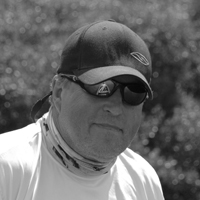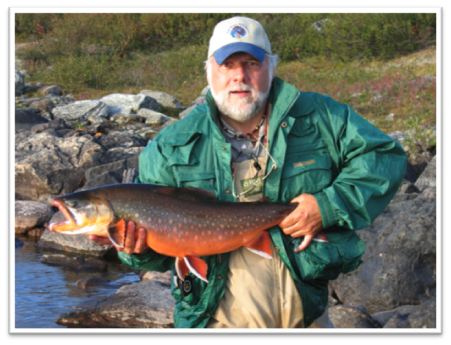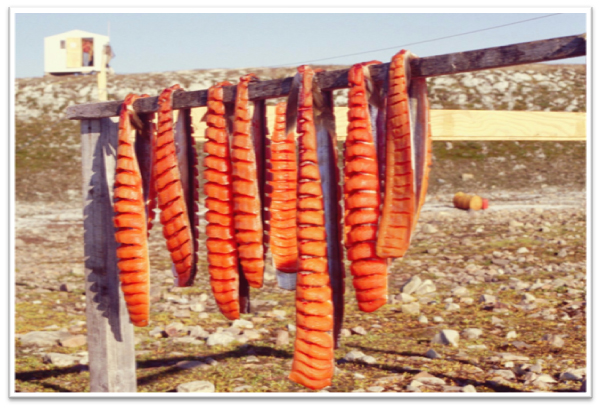
Fly Fishing for Arctic Char

ARTICLE BY INDREK KONGATS, AUGUST 30, 2018
Have you ever dreamed of going on a once in a lifetime fishing trip where the fish are big and plentiful and wild? Well, Canada’s Arctic Char fishing is just the trip. 
You don’t need a visa to go to Canada. Political stability is pretty sound and there are very few poisonous critters to worry about; in fact there are only the toothy kind (polar bears) the further north you go.
The climate is also predictable, freezing cold in the winter and mild in the summer. When Katrina hit New Orleans back in 2005, my tent was rocking several days later as she made her way up to Ungava Bay in northern Quebec— that’s about the worst that it will get.
The Arctic Char is an ocean-going member of the salmon and trout families, exhibiting an adipose fin, similar in coloration as a brook trout when in freshwater, but silver upon returning to the ocean. You can find char all over the Arctic, including Greenland, Norway, Sweden, Russia and even in some high alpine lakes further south. Victoria Island, in the western Canadian Arctic and Ungava Bay in the eastern Arctic, host the largest char and are the best choices for the novice to expert fly-fisherman.
The fishing takes place in mid to late summer from mid-July, once the ice goes out, to mid-September. You can expect mild daytime temperatures in the 50s-60s dropping down to freezing at night. Accommodations are most often tent cabins, which are heated sometimes, but regardless, a warm sleeping bag is essential.
The experience alone of being up in the Arctic is worth the airfare, daylight enough to read a book by at 2 a.m., dark enough to get a quick few hour nap in before the sun comes up again a 5. Victoria Island is barren— no trees, no bushes, just lichen so deep on the tundra it is like walking on air. 
Ancient Inuit community tent circles abound, and piles of rocks used to trap the Arctic Fox are more common than not. Birders will love the variety and abundance of species, from sandhill cranes to trumpeter swans.
Ungava Bay is really in the sub-arctic region and falls into the edge of the tree-line, a sharp contrast to Victoria Island. An amazing feature of this region is the tide rising as high as 56 ft. Ungava Bay rivers are also host to Atlantic salmon and some of the largest brook trout in the world.
The best time to book your Arctic char adventure is now in the fall for the following season. In order to get the preferred week when the char are just entering the rivers, you need to book well in advance. Most camps will take 6-12 fisherman per week, with a three-week fishing season— very low fishing pressure, but extremely limited space as these trips are very popular. 
Access to Ungava Bay is through Montreal, and Victoria Island through Edmonton. Expect to layover in these cities both on going and coming back, as the connecting flights further north depart very early in the morning and return late in the day. Outfitters normally include commercial airfare from these departure cities.
Upon arrival in the Arctic, you then take a chartered float plane trip to your outfitter’s camp. Some outfitters offer daily fly outs to rivers in their area, while a few fish only the river that they are set up on. Either way, the fishing is excellent.
The reason that these fly fishing trips are excellent for the novice to expert alike is in the ease of hooking fish. You don’t need to be able to cast long lines as the fish hug the shore line. You can use single-handed or two-handed spey rods to swing the fly across the current. The hit will come on the tangle as the fly swings down below the angler and flutters in the current. Short tugs on your fly line will entice the char to strike. The real challenge begins once the fish is hooked.
Arctic Char range in size from an average of 6-10 pounds to over 30. You never know what you’ll get until your rod is bent double and your reel begins to sing. Fresh from the ocean, char are extremely strong and fishing in an equally strong river current makes it almost impossible to land a fish without walking it down to a quiet eddy. I have had many char take off upstream with my fly line slicing through the water like a saw blade through wood, humming all the way.
back to main menu

|